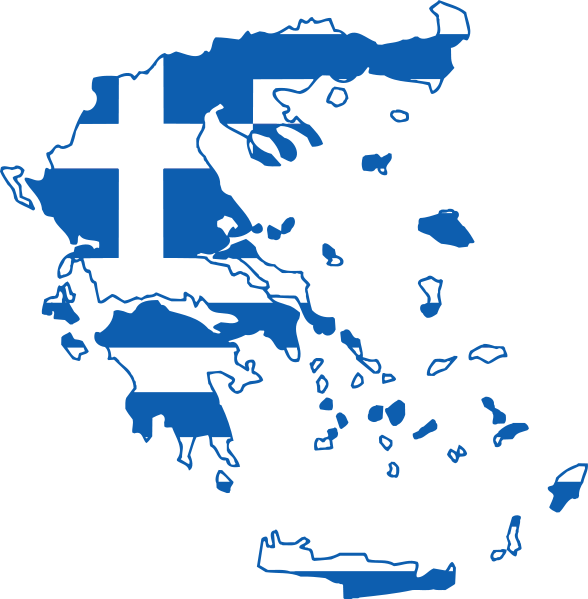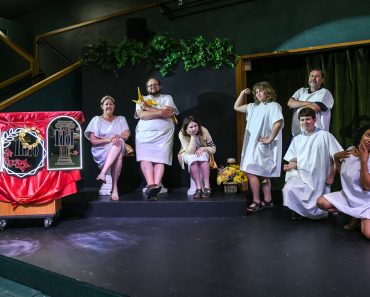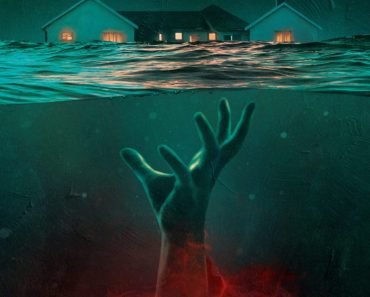Publisher: Ravensburger
Age: 10+
Players: 1 – 5 players
MSRP: $29.99
Release: Available at Target July 20 (Other retailers August 1)
Horrified: Dungeons & Dragons is the fifth game in the cooperative strategy game series, and the first to use an official license. The D&D theme is an excellent fit for the monster-battling series, though some questionable design decisions keep it from becoming my favorite.
Read on for our review of Horrified: Dungeons & Dragons!
Roll for Initiative
In case you’re new around the Horrified-verse — it’s a co-op game where players use their limited actions to move around a board, collect items, escort victims, and avoid rampaging monsters. The goal is to destroy the monsters before the Terror track reaches its end (caused by too many deaths), or the monster deck runs out (which fuels the monsters’ actions, as well as new items spawns).
Player characters have their own special skills, while every monster has a unique way of defeating them, and the D&D foes are no different.
Horrified: Dungeons & Dragons is most similar to last year’s Cthulhu-themed release, Horrified: World of Monsters, in that it only features four monsters, but one of the monsters is a much larger, more complex threat. In this case, it’s the iconic red dragon.
To defeat the dragon, players must engage with the Lair system that was introduced back in the third game, Horrified: Greek Mythology (and consequently, makes the earlier two Horrified games non-compatible with the latter releases). Once the Vault is located, players need to discard items to solve a randomly-generated sliding block puzzle to nab the Orb of Dragonkind. Then the dragon must be lured to its hoard, where the orb and other items can be placed before rolling the trusty d20 to defeat it.
The d20 is a new addition to the Horrified series, and lifted directly from tabletop Dungeons & Dragons. It’s used to activate the new player special abilities, as well as some monster attacks and challenges.
Starting a 3 player game
The Beholder eye ray is the best use of the die, with players rolling the dice to determine which of its eye rays are fired (which is exactly how the Beholder works in D&D).
The other two monsters are the Displacer Beast and Mimic. Classic D&D foes, though not the ones I would have necessarily chosen to best represent D&D baddies (Lich? Mind Flayer? Gelatinous Cube?). The Displacer Beast is the most standard of the new monsters, with players discarding low-cost items onto sections of its creature mat, then rolling a d20 to try and hit the right numbers.
The Mimic may be the most interesting and unique monster of the bunch. The ambush predator disguises itself as an object, typically a treasure chest, and doesn’t appear on the game board at first. Instead it follows its own track on its monster mat, and periodically checks to see if the entire team has certain items. If they do, it appears on the board and can be fought (and attack), but if not, it remains in hiding (and raises the Terror level!). This created some fun tension during the game on whether to spend certain items progressing other monsters, or hoard up to prepare for the Mimic check.
Weirdly, all four monsters are labeled as “Complexity: High,” in the rulebook, which just seems like an error. After a couple games, I’d rank the Beholder and Displacer Beast as low, the Mimic as medium, while the multi-stage Red Dragon should remain at high complexity.
The Mimic is cool and different, though the Beholder and Displacer Beast are a bit too samey (the fact that only the dragon uses the Lair tokens is also a misstep). The Red Dragon isn’t nearly as painful to setup or confusing to play as Cthulhu from World of Monsters, though I’m not a big fan of sliding block puzzles. I’m also just not a big fan of these extra-long monster designs; can we please go back to including five or six mechanically distinct, normal-length monsters?
Dungeon of the Mad Mage
The player characters, which are D&D classes such as Fighter and Rogue, are also something of a mixed bag. To activate their unique signature ability, every one of the five character classes rolls the d20 to determine what actually happens. While rolling dice to attack is a classic D&D staple, Horrified makes special abilities too random and chaotic, often resulting in a risky maneuver that’s rarely more valuable than the basic actions of moving and picking up items.
Player characters include a tiefling wizard, kenku bard, and dragonborn fighter
For example, the Fighter has some awesome defensive abilities. If I roll a 9-15 I can ignore all hits from a monster on the next monster phase. Nice! On a 16-19 I don’t have to draw a Monster Card at all, meaning the monsters do nothing for a turn — incredible! And if I roll a nat 20, I get 2 free actions and a perk card. Heck yes!!
Now for the bad news. If I roll 1, nothing happens, it’s a wasted action. On a 2-8 I teleport to the nearest monster, which can technically be useful toward the end when I’m ready to defeat a monster. But typically I’m trying to avoid them most of the time.
You can see the dilemma. It’s hard to justify the risk of activating the special ability, and the use of one of my precious four actions, to get a result that may be wildly different than what I wanted.
Monsters and Difficulty Level |
| Up until now, Horrified suggests playing against two monsters for an Easy game, three for Standard, and Four for Challenging. Three always felt quite difficult for my group, and we prefer playing against two, particularly in the last two Horrified releases. For the first time, Horrified: D&D doesn’t have difficulty suggestions at all, only mentioning playing against two monsters. Perhaps that’s become the new standard? I played all my games against two monsters with 1, 2, and 3 player counts, and found the difficulty level just right. |
While the random effect could work well for certain D&D classes, such as a Wild Magic Sorcerer, I found it a bit too chaotic in the tight action-economy of Horrified. The Rogue’s 2-8 result of sharing items is almost never useful. The Bard’s focus on movement seems good, but it’s all based on their proximity to others, and not knowing whether you can move citizens, players, or monsters is confounding.
The Cleric and the Wizard are probably the most consistently useful, though the Wizard’s random teleportation could land you in very hot water. The Cleric is pure defense, allowing re-rolls on the monster phase, which is nice. But again, I’d almost always simply use my actions to move around. It’s always best not to get hit in the first place!
It’s a shame the free-action special abilities from many of the player characters in World of Monsters aren’t used again here.
The actual character boards are lovely, adopting a different art style than the game board, which may be my favorite Horrified board yet. Waterdeep is lovingly portrayed, from Trollskull Alley to the classic Yawning Portal Inn — but that’s only the top 1/3 of the board! In true D&D fashion, we’ll be delving into the sprawling dungeons beneath Waterdeep known as Undermountain, including the villainous Skullport, the underground forest of Wyllowwood, and various altars to dark gods.
Connecting these areas are Teleportation Circles, which help solve a lot of problems in previous Horrified board layouts, as players can swiftly move between any Circle. The only painful areas to get to are the more remote Northwest corners of the map. Another added map wrinkle: the imposing Red Dragon cannot enter Waterdeep, making it beneficial to detour and scoop up items from town, though the players are always racing against the clock.
D&D fans of the 5e adventure modules Waterdeep: Dragon Heist, and Waterdeep: Dungeon of the Mad Mage will recognize a lot of fun references within the locations, citizens, and perk cards. Though it’s an odd choice that the perk cards are famous people rather than powerful magic items.
The bard and fighter are dangerously close to the dragon.
The Rating
The Horrified series has a recommended age of 10+. The co-op game features open information, making it easy to help younger or newer players. There is no player elimination, though defeated players raise the Terror level, which can then lead to a game over.
The Takeaway
I’m a big D&D fan, and I’ve played all the Horrified games. D&D is the perfect fit for Horrified, with rampaging monsters, heroic characters, and fleeing citizens, and definitely features my favorite board layout. The d20 is a fun idea, but the execution is hit and miss. The game board is awesome, though the monsters are just okay; ambitious fans can also combine this game with any of the content from Horrified: Greek Mythology and Horrified: World of Monsters.
If I had to pull out just one Horrified box, I’d still choose the original, but my second pick would probably be Horrified: Dungeons & Dragons.
Horrified: Dungeons & Dragons will arrive at Target on July 20, and mass retailers on August 1.







